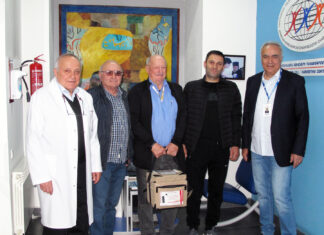WASHINGTON — Dr. Zaven Arzoumanian and Dr. Keith Gendreau, researchers at NASA’s Goddard, Washington, DC center, are making news in the mysterious world of astronomy, trying to put together pieces of a heavenly puzzle of dying Neutron Stars that are believed to stars that have undergone an interior collapse. They are spinning pulsars, beaming lights, intense magnetism and are the densest matter known. These are to be studied using a highly sophisticated electronic detector called the Neutron Star Interior Composition Explorer (NICER), a multimillion dollar, approximately one cubic meter box, packed by electronic devices, built by the two leading scientists.
“Neutron stars are fantastical stars that are extraordinary in many ways,” said Arzoumanian. “They are the densest objects in the universe and the fastest, and most accurate, spinning objects known, some up to hundreds of times per second, and the most strongly magnetic objects known.”
The structure and composition of neutron stars are so extreme that normal atoms are pulverized, freeing subatomic particles like neutrons, protons, electrons and a spectrum of radiation.
A partnership between NASA, the Massachusetts Institute of Technology, the Naval Research Laboratory, and a score of universities, including Montreal’s McGill University, NICER should give scientists their first measurements of the size of a neutron star.
“They emit light all across the spectrum, from radio waves to visible light up to X-rays and gamma rays, primarily in narrow beams from their magnetic poles. And if we happen to be in the path of the sweep we see a flash every time one of these beams go by and the stars from a distance appear to be pulsing, so they’re called pulsars,” Arzoumanian said.
Scientists will also demonstrate the potential of using the timing of pulses from neutron stars for deep space navigation.









